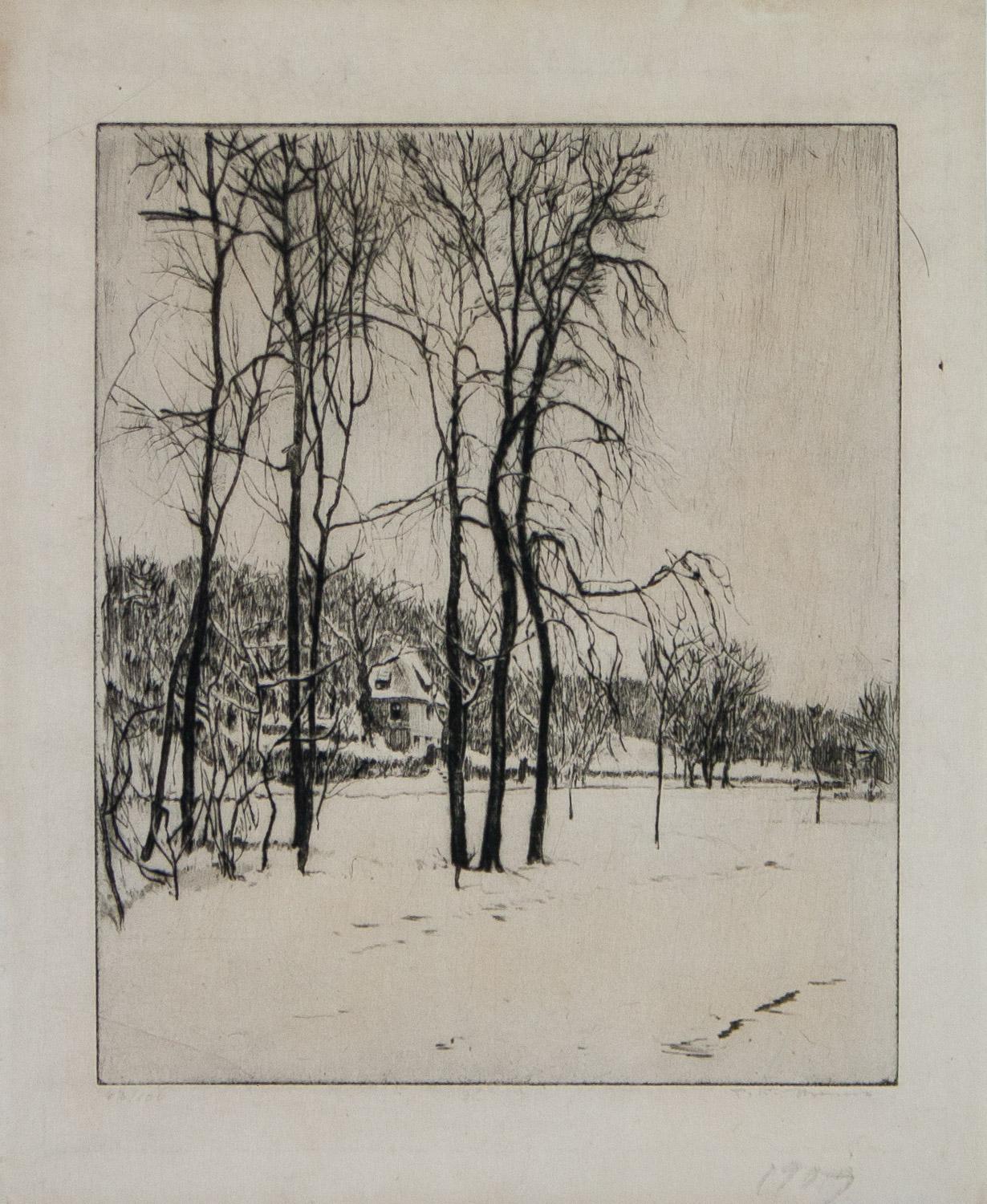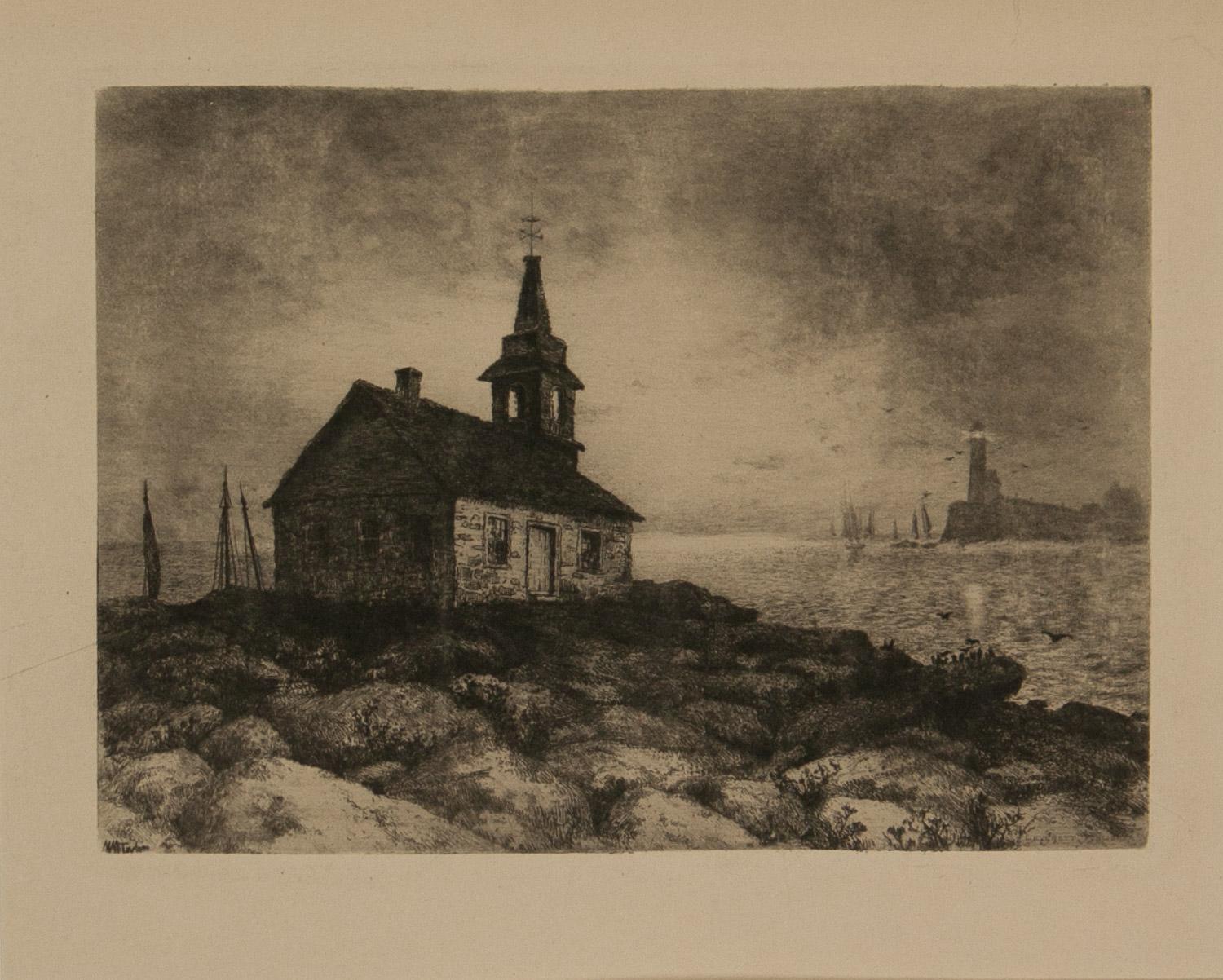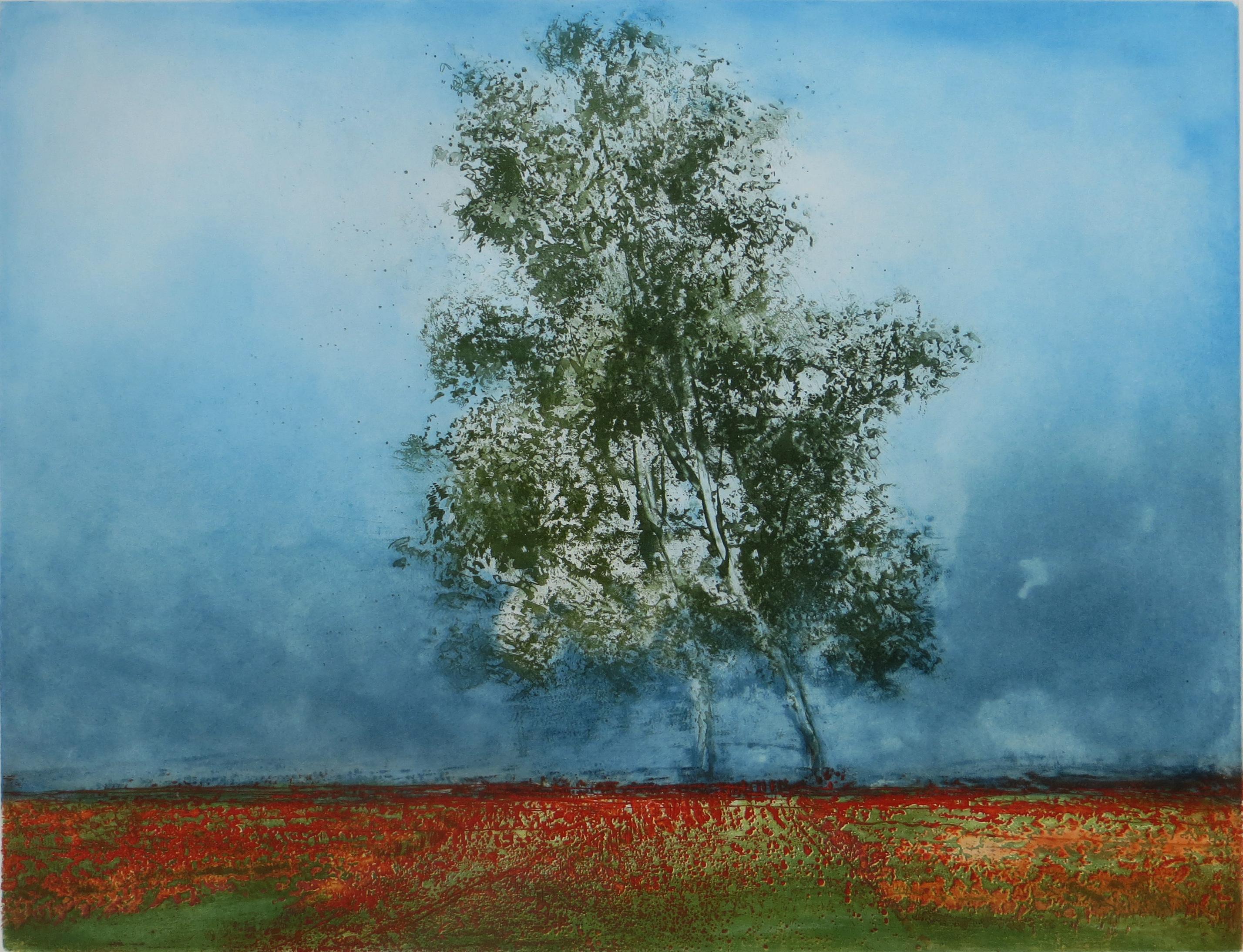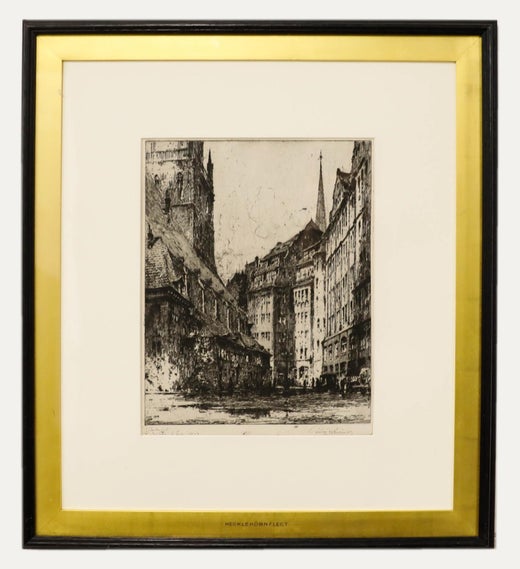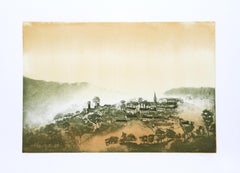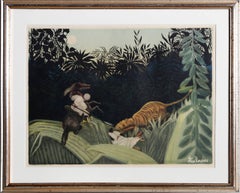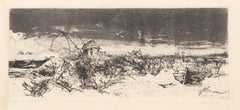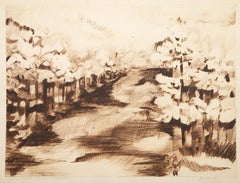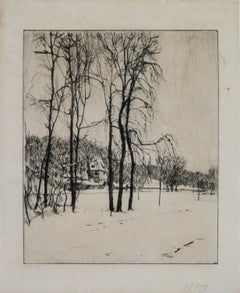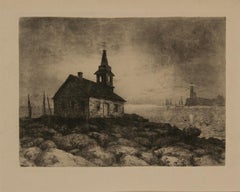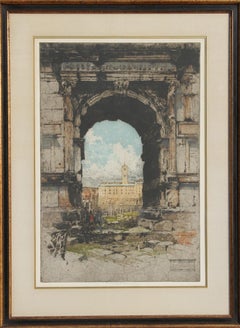
Arch of Titus, Rome
View Similar Items
Want more images or videos?
Request additional images or videos from the seller
1 of 5
Luigi KasimirArch of Titus, Rome1923
1923
Price:$900
$1,200List Price
About the Item
- Creator:Luigi Kasimir (1881 - 1962, Austro-Hungarian)
- Creation Year:1923
- Dimensions:Height: 37.5 in (95.25 cm)Width: 28 in (71.12 cm)Depth: 2 in (5.08 cm)
- Medium:
- Movement & Style:
- Period:
- Condition:
- Gallery Location:Long Island City, NY
- Reference Number:1stDibs: LU4664529782
Luigi Kasimir
Alois Heinrich “Luigi” Kasimir (Austrian, 1881-1962) was born on April 18, 1881 in Ptuj, Austria (today Slovenia) then a part of the Austro-Hungarian monarchy. He may have inherited his talent from his ancestors; his grandfather was a painter and a poet, and his father, an officer in the Habsburg army, who later became a professional painter. Kasimir attended the Vienna Academy of Art where he studied under Willhelm Unger, who introduced him to the technique of the color etching, and also to his future wife, the artist Tanna Hoernes. Kasimir was among the early practitioners of the multi-plate color etching. Before this, prints were usually hand-colored with the color being applied in a casual, haphazard manner. Kasimir would first create a sketch—usually in pastel. He then transferred the design on as many as four to six plates, printing one after the other and applying the color to the plate - all done by hand. Although Luigi Kasimir is mainly famous for his etchings, but he also produced some oil painting, as well as some pastels. One of his favorite genres was the landscape. He demonstrated a predisposition for monuments, street scenes, and tourist landmarks. He depicted places from all over Europe, mainly Italy, Austria, and Germany. He also travelled to the United States to do a series of etchings of famous sights ranging from urban landmarks such as New York skyscrapers to natural wonders like California’s Yosemite Valley. Kasimir designed a bookplate for Sigmund Freud, who also hung an etching of the Roman Forum by Kasimir in his consulting room. Kasimir’s wife, Tanna and their son Robert worked in a similar style. Luigi Kasimir died in 1962 in Grinzing, a suburb of Vienna, Austria
About the Seller
4.9
Platinum Seller
Premium sellers with a 4.7+ rating and 24-hour response times
Established in 1979
1stDibs seller since 2014
3,092 sales on 1stDibs
Typical response time: 1 hour
Authenticity Guarantee
In the unlikely event there’s an issue with an item’s authenticity, contact us within 1 year for a full refund. DetailsMoney-Back Guarantee
If your item is not as described, is damaged in transit, or does not arrive, contact us within 7 days for a full refund. Details24-Hour Cancellation
You have a 24-hour grace period in which to reconsider your purchase, with no questions asked.Vetted Professional Sellers
Our world-class sellers must adhere to strict standards for service and quality, maintaining the integrity of our listings.Price-Match Guarantee
If you find that a seller listed the same item for a lower price elsewhere, we’ll match it.Trusted Global Delivery
Our best-in-class carrier network provides specialized shipping options worldwide, including custom delivery.More From This Seller
View AllMountain Village, Impressionist Aquatint Etching by Hank Laventhol
Located in Long Island City, NY
Hank Laventhol, American (1927 - 2001) - Mountain Village, Year: circa 1980, Medium: Aquatint Etching, signed and numbered in pencil, Edition: 300, AP XXXV, Image Size: 16.5 x 24...
Category
1980s Impressionist Landscape Prints
Materials
Etching, Aquatint
La Chasse au Tigre, Surrealist Aquatint Etching by Jacques Villon
By Jacques Villon
Located in Long Island City, NY
Artist: Jacques Villon, After Henri Rousseau, French (1844 - 1910), French (1875 - 1963)
Title: La Chasse au Tigre
Year: 1924
Medium: Etching with Aquatint, signed and dated in th...
Category
1920s Impressionist Landscape Prints
Materials
Etching, Aquatint
Spiaggia di Nettuno, Impressionist Etching by Renzo Vespignani
By Renzo Vespignani
Located in Long Island City, NY
Renzo Vespignani, Italian (1924 - 2001) - Spiaggia di Nettuno, Year: circa 1970, Medium: Etching, signed and numbered in pencil, Edition: AP, Image Size: 4.5 x 10.75 inches, Size: 1...
Category
1970s Impressionist Landscape Prints
Materials
Etching
The Sun Has Given The Wealth To The Land, Impressionist Etching
Located in Long Island City, NY
George O'Connell, American (1926 - ) - The Sun Has Given The Wealth To The Land, Year: 1958, Medium: Etching on Arches, signed, titled and dated in pencil, Image Size: 17.75 x 24 i...
Category
1950s Impressionist Landscape Prints
Materials
Etching
"La Maison aux Volets Verts, " Etching with Aquatint by Manuel Robbe, circa 1955
By Manuel Robbe
Located in Long Island City, NY
Artist: Manuel Robbe, French (1872 - 1936)
Title: Carrot Harvest
Year: circa 1955
Medium: Etching with Aquatint, signed in pencil
Image Size: 17.5 x 23 inches
Size: 24 x 28.5 inches
Category
1950s Impressionist Landscape Prints
Materials
Etching, Aquatint
Cityscape, Photorealist Signed Etching by Harvey Kidder
By Harvey Kidder
Located in Long Island City, NY
Cityscape
Harvey Kidder, American (1918–2001)
Date: circa 1985
Aquatint Etching, Signed and numbered in Pencil
Edition of 150
Image Size: 19 x 18 inches
Size: 30 x 22 in. (76.2 x 55....
Category
1980s American Impressionist Landscape Prints
Materials
Etching
You May Also Like
Goethe House Weimar Germany 1909 etching by Tanna Kasimer Hoernes
Located in Paonia, CO
The Goethe House (Goethes Wohnhaus) is the main house lived in by the writer, poet, and statesman Johann Wolfgang von Goethe whilst in Weimar, Germany, though he did live in severa...
Category
Early 1900s Impressionist Landscape Prints
Materials
Etching
Etching with Lighthouse by M.M.Taylor
By Margaret M. Taylor Fox
Located in Paonia, CO
Philadelphia born American painter, illustrator, and etcher Margaret M. Taylor Fox ( 1857 - c.1941 )
attended the Philadelphia Academy of Fine Arts which house a collection of her ...
Category
19th Century American Impressionist Landscape Prints
Materials
Etching
Two Horses
By Kaiko Moti
Located in San Francisco, CA
This artwork "Two Horses" 1964, is an original color aquatint on paper by noted Indian artist Kaiko Moti, 1921-1989. It is hand signed and numbered 107/120 in pencil by the artist. ...
Category
Mid-20th Century Impressionist Animal Prints
Materials
Aquatint
Venice
By Kaiko Moti
Located in San Francisco, CA
This artwork titled "Venice" 1965 is an original color aquatint on Arches paper by noted Indian artist Kaiko Moti, 1921-1989. It is hand signed and numbered 42/100 in pencil by the a...
Category
Mid-20th Century Impressionist Landscape Prints
Materials
Aquatint
Sunrise
By Kaiko Moti
Located in San Francisco, CA
This artwork titled "Sunrise" 1978, is an original color aquatint on rice paper by noted Indian artist Kaiko Moti, 1921-1989. It is hand signed and numbered LXXIV/LXXV in red pencil...
Category
Mid-20th Century Impressionist Landscape Prints
Materials
Aquatint
$1,500
Le Retour Des Pecheurs
By Manuel Robbe
Located in San Francisco, CA
Artist: Manuel Robbe (French, 1872-1936)
Title: Le Retour Des Pecheurs
Year: 1933
Medium: Etching with aquatint
Paper: B.F.K Rives
Image (plate mark) size: 1...
Category
1930s Impressionist Figurative Prints
Materials
Aquatint
Recently Viewed
View AllRead More
Romare Bearden’s Humanity Infuses His Bright, Bold Art
Through collage, painting and printmaking, the artist foregrounded Black life in America in revolutionary new ways.
Chryssa’s 1962 Neon Sculpture Was Way ahead of the Art-World Curve
By working with lettering, neon and Pop imagery, Chryssa pioneered several postmodern themes at a time when most male artists detested commercial mediums.
More Ways To Browse
Arch Of Titus
Larry Nelson
Melbourne Smith
Railroad Track
Yoga Sculptures
Baby Beds Used
Clay Bay
Format Tie
Used Railroad Track
E Hamilton
Horse Resin
Jaguar Sculpture
Lucien Durand
Monumental Old Masters Oil Paintings
Sculpture Clay Birds
Totem Native American
Vintage Watercolour Box Watercolour Paint
Weeping Willow Art
